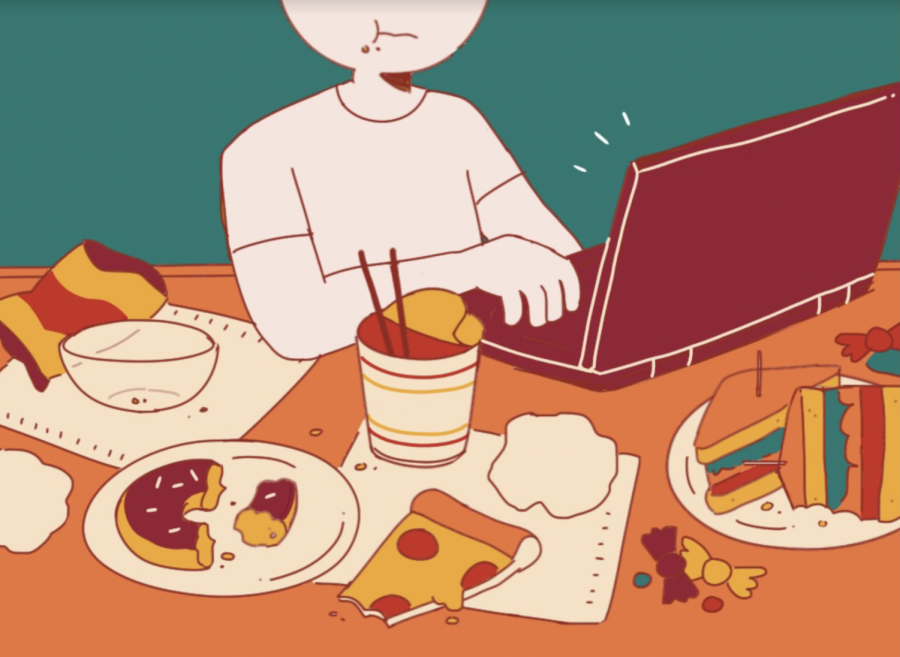OPINION: The distance learning schedule may lead to unhealthy and unsafe eating habits
With the current schedule in place, unhealthy habits such as overeating may occur.
After turning off their camera, a student goes to their pantry for their second snack of the hour.
At home during distance learning, students inevitably have more access to their pantries and fridges; thus, they are more independent with the timing and planning of their meals. Among many potential downsides of distance learning, a student’s eating habits and health may be negatively impacted by the online factor that includes the current school schedule and student’s independence at home.
With the ease of obtaining food and eating unseen, students may be more likely to eat during online class and are also more likely to eat larger amounts of food. Since classes for students start at 8:30 a.m. and lunch starts at 11:15 a.m., the time in between is very condensed. This means students are more likely to cram meals in between those two times. Trying to manage meals and their own classes could lead to many students struggling with unhealthy eating habits and a decline in health.
According to an article on WeAreTeachers.com titled “Kids (and Teachers) Don’t Need to Spend 8 Hours a Day on School Work Right Now” by Hannah Hudson, creating a new normal out of virtual learning does not help the needs of students, teachers or parents. Hudson claims that “Trying to replicate a traditional school schedule online may be impossible.” Continuing with a schedule that works better for in-person learning harms students by enabling them to eat more frequent, unhealthy snacks throughout the day.
While the school schedule provides little time for students to obtain meals, another factor that discourages students from gaining proper meals during the day is student’s independence at home. Students currently have the power to turn off their camera at any time and even exit their classes when they feel they need to. During an online class, a student can simply turn off their camera and make a trip to the kitchen while still attending the call. In the past, schools could limit when and what their students eat, unlike now, where students have the freedom to make their own decisions regarding food. This situation could be damaging to students’ diets because of their food intake.
Some may argue that not all students overeat. While this may be true for in-person schools, students who are currently learning from home face many challenges, including unhealthy eating habits. There are many uncontrollable factors that could prevent one from being able to eat, but the scheduling of online classes and the independence granted to students are the main cause of the problems surrounding the eating habits of students.
This year, many have struggled with virtual learning, especially students who now have to manage their own lives and routines. The current way of classes at SCHS does not provide stable or healthy diets for students. Students should be granted enough time throughout their day of classes to spread out their meals.


